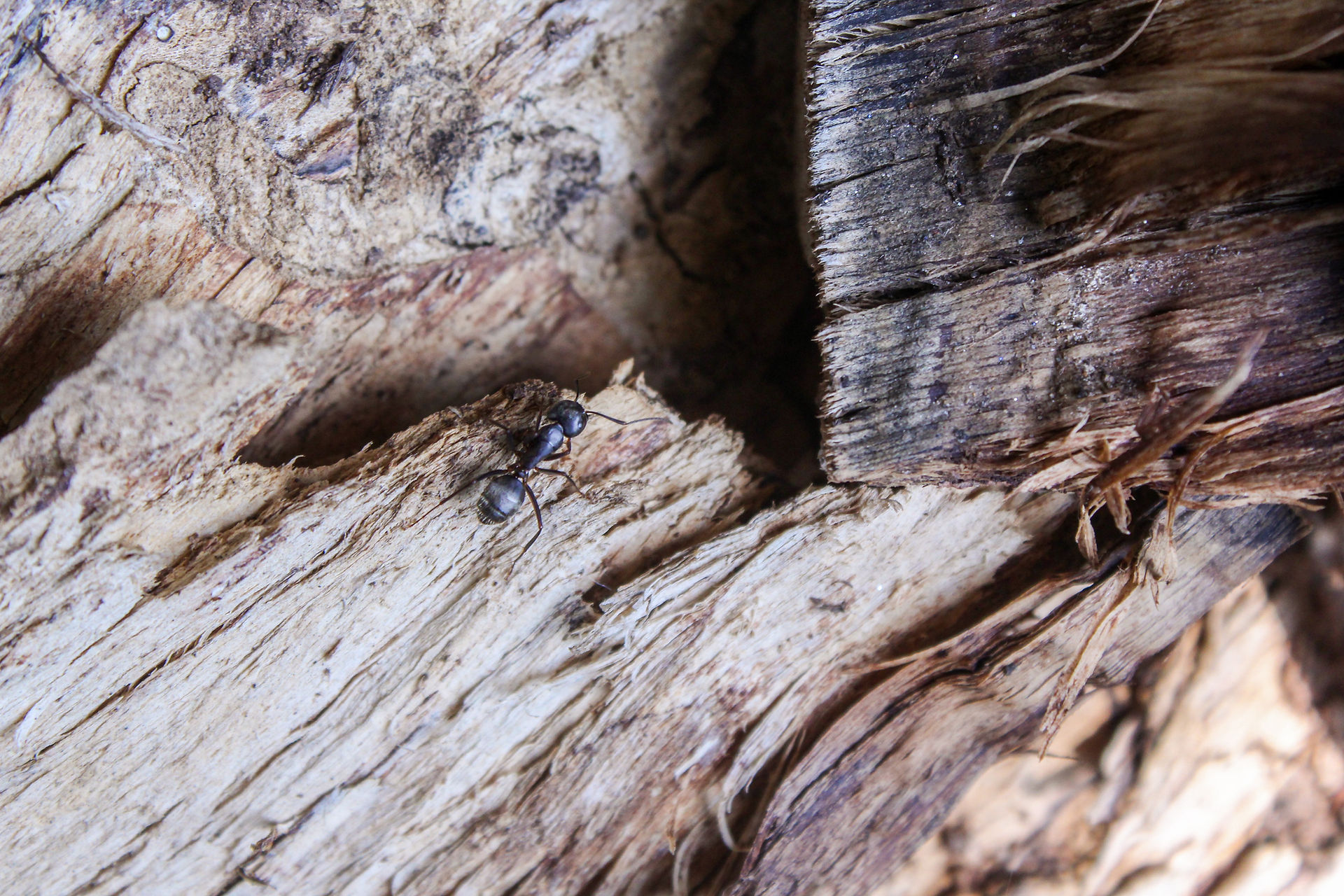
Western Bluebird
Resorts of the Thief Ant
When you see this thief ant, you see desperation.
This tiny yellow insect, being just a few millimeters long, represents the measures taken by a community that has so little going for itself and so much going against it. It's one of the smallest specimens you'll find at Orma J. Smith Museum, causing it to be overlooked by most patrons. Incidentally, this quality of being overlooked is what makes this ant successful.


Thief Ants (Solenopsis Molesta) are named for their unique mode of obtaining food. Instead of gathering food from prey or from foraging, this species resorts to covertly burrowing into the homes of other ants to steal their stocked food and brood. They're also a common American house pest, being small enough to fit through most cracks in a home, and even food containers.
Thieves in the Animal Kingdom
A thief ant (left) alongside one of its hosts, a pavement ant (right).
Thievery actually isn’t an instinct unique to the thief ant. This behavior, coined in a wider context as kleptoparasitism, is performed by many other animals that steal any resource from others, not just food. The group of animals this behavior is most common in, as well as most studied, is flying birds. Even in this field, thief ants are unique in that they lack the mobility of flying animals, instead being one of the only and slowest land-borne thieves in the animal kingdom.

Close Cousins
Thief ants share a genus with the more well-known fire ant. Despite basically being evolutionary cousins, the two species couldn’t be much more dissimilar in their perception. Fire ants, for example, have garnered a rather intense image for themselves. They have a famously painful sting, and an evocative common name to reflect it.
The thief ant, in contrast, has a far less evocative reputation. Despite their close relation, they have no quality means to bite or sting (Murray). With not an ounce of venom in them, their means of defense is considerably lower. This with the consideration of their significantly lower size (fire ants being up to 6 mm long, thief ants rarely exceeding even 2 mm and are more often around 0.5 mm) and you have what appears to be a straight downgrade species to species. A fire ant is larger, more dangerous, and more feared than even a queen thief ant.


Against the World
The hand these ants have been dealt by their physical disadvantages forces them into a state of desperation, where they have low odds if any of stable survival. And yet they survive. More than that, they thrive, dotting the New World with no grand existential threats to speak of. Through desperation, how can such a physically weak species make such a mark? Really, it’s simple. For the thief ant, less physical strength isn’t a weakness, as they’ve spun that quality to be their greatest weapon. Using their small size to steal from other ants is the only way they can survive, and that embrace it.
Thievery has the same motive in human societies as in evolutionary biology: a symptom of harsh circumstance, a resort by the desperate just to survive. Not only is it a way to circumvent the disadvantages they suffer, but they’re especially successful at it because of their physical limitations. Desperation is a driver for the opportunistic, albeit the greedy. Thieves are sole takers, but so would everything if they were as outdone and as overlooked as this little yellow ant.
